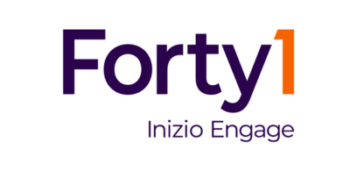Gotta Catch ‘Em All: What Pokémon can teach us about Diversity, Equity and Inclusion
 Luke-Matthew Iveson
Luke-Matthew Iveson We also heard how important communications and engagement are in changing behaviours and mindset, creating a culture of openness where everyone understands the value and can be their true authentic selves. Therefore, generic definitions just don’t get the employee buy-in needed, they should be unique, and the organisation should communicate what they mean and why they are important. Only then can they be embedded in communications, employee value propositions, engagement initiatives and your unique culture.
Here is my take on diversity, equity and inclusion and how to navigate them, I hope they are useful in starting the discussion with your own organisation.
Diversity
What people bring in terms of experiences and the way they think is the essence of diversity. Many organisations pride themselves on the diversity of their employees, ensuring that there is a mix of genders, race and sexualities within their workforce. My biggest frustration with this way of thinking is that organisations then see diversity as a tick box exercise, they don’t fully appreciate the power of diverse-lived experiences and ways of thinking, they just focus on the physical.
Whilst there are no doubt good intentions here, it’s problematic and has the opposite of the desired effect. It can highlight aspects of heteronormativity, uphold racist ideologies and reinforce discrimination of minorities because they are ‘different’ to what is considered the ‘norm’.
Diversity in the context of DEI is about appreciating these individuals’ thoughts and experiences, and not just because they may be transgender, black or a woman. People aren’t Pokémon; it’s not about collecting them all. People shouldn’t be categorised by ‘type’, it’s about valuing what they bring to the table. You build the perfect Pokémon team by looking at individual types, unique skills and abilities and looking at the challenges you need to overcome. This is how we should see diversity in our employees, they are all unique and can help your business thrive. Do you really think you can defeat the elite four with a team of just fire type Pokémon – the answer is no, I tried.
Equity
First it was diversity, then inclusion came along, and the trio was complete with the addition of equality. Equality is great, and minority groups have fought – and are still fighting – for the right to be seen as equal, but it isn’t enough. Equity is important because it recognises the individual and their personal challenges and needs.
Many organisations talk about equality within the workplace, but is this a good thing? Does it actually promote inequality? By treating all employees equally are we actually standing in the way of them thriving, learning and developing?
Think about it this way: you give two employees a task and say you have one day to create a five-slide presentation that should be presented in under three minutes. Both employees have the same set of limitations, both have the same tools and time frame…great!
But what if one of these employees had a stutter? Would three minutes be enough for them to get their point across? What if one of the employees could express their ideas even better through a different medium and felt restricted to the tools they were given?
Equality is about everyone being treated the same, whereas equity refers to treating everyone as individuals with different skills, ways of working and needs. It’s about making sure they have the tools they need to do their job to the best of their ability, removing barriers and promoting inclusivity. To reference Pokémon again – there is are no strong or weak Pokémon as far as I’m concerned, it’s the training investment and attention Pokémon trainers pay to each member of their team – this is what equity is and leaders should do the same for their employees.
Inclusion
Inclusion doesn’t happen naturally. It needs to be embedded in every aspect of a company: the communications, behaviours and process. It’s possible that an organisation can be diverse but not inclusive. A company may have ‘differences’ across their workforce, but without inclusivity, these diverse experiences and ways of thinking are silenced.
Ultimately, inclusion is about giving every individual the platform to share and be heard, showing all employees that they are valued and not just a number within a list of demographics.
Once these terms are defined and communicated, its’ important to understand how they work together. Not all organisations are the same, and for some this might be different, but here is a great place to start:
Diversity across the workforce promotes diverse thinking, experiences, and ways of working
Equity ensures every individual employee has the tools and opportunities they need to thrive
Inclusivity amplifies and validates the voice of every individual so that their opinions are heard and welcomed.
Getting your head around the challenge can be daunting – but aligning on simple and impactful definitions is a great way to start. Begin by having authentic and open conversations with your employees, ask them what these terms mean to them, to your organisations and to their peers. Really listen to what they tell you. Some will have controversial views and will be passionate about defining these terms, some may not fully understand and be a little nervous. But it’s in these discussions that you will find the insights you need to really define what DEI is for your people – take the leap and start asking these questions.
Next Article
 Luke-Matthew Iveson
Luke-Matthew Iveson
The three “As” of Affinity movements: how to be a year-round platform for DEI
The three “As” of Affinity movements While many organizations take pride in celebrating their business...
Read more Rani Khalon
Rani Khalon
Affinity Celebrations: How You Get Involved
How do we keep our people passionate about the causes we commemorate and ensure they make a positive difference? In the...
Read more Laura Hunt
Laura Hunt
Affinity Celebration Series: What you should know
Affinity celebrations often serve as a moment in time for us to come together, honour diverse histories and celebrate...
Read more